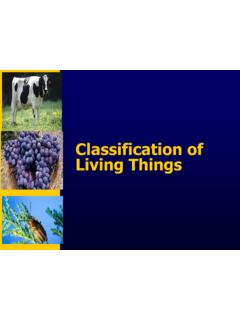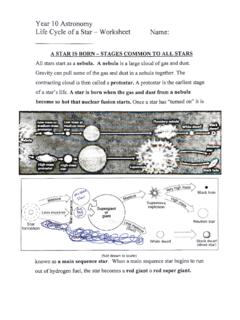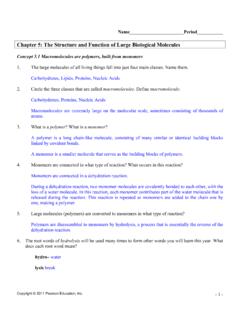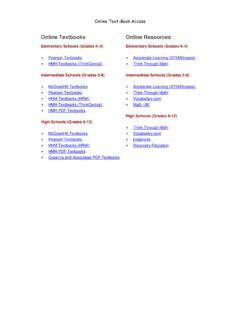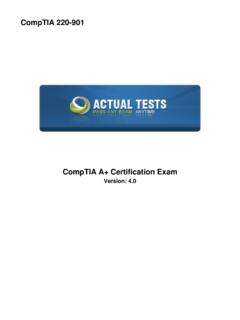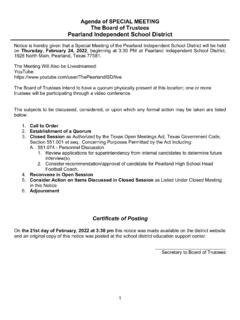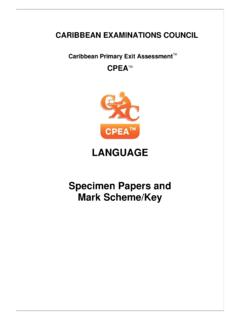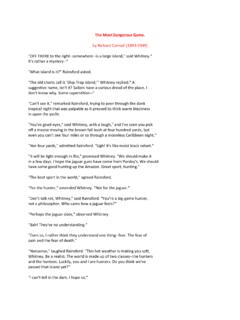Transcription of Fetal Pig Dissection Manual - Pearland Independent School ...
1 Fetal Pig Dissection Manual 2019 Turner College & Career High School Introduction Fetal pigs are readily available, since farmers find it profitable to breed female pigs which they plan to sell. Thus, pig fetuses are byproducts of the slaughter houses. The period of gestation is 112 to 115 days, and there are, on the average, about seven to eight offspring in a litter. At birth the pigs vary from 12 to 14 inches in length. The approximate age of the fetus can be determined by measuring the length of the body from the tip of the snout to the rump (not including the tail). The following are approximate body length to age relationships: Gestation Table Length of Specimen Approximate Age in Days from Fertilization 4 cm 56 days 20 cm 75 days 25 cm 100 days 30 cm 105 days 35 cm 111 days 40 cm 115 days (full term) As a laboratory animal the Fetal pig has several advantages.
2 It is relatively inexpensive so that usually a maximum of two students can be assigned to an animal. Since they are small, they do not require much storage space. The animals are mammals and, therefore, their structures are like those of humans. In addition to relatively mature organs, there are also Fetal structures present that are directly comparable to those of human beings. These include the umbilical cord and the circulatory structures which are specialized for Fetal circulation. As the Fetal pig is dissected and studied, the structures identified should be compared with those of the human. Dissection is not merely cutting the animal, but a systematic technique of bringing into view structures which, in their normal position, cannot readily be seen. Follow instructions exactly. Do not cut or remove any structure unless directed to do so.
3 Always separate structures carefully, especially blood vessels, by moving connective tissues out of the way. It is best to use the dull probe for this task. You may find that the substances used to preserve the specimens are irritating to your skin. If so, wear thin vinyl or plastic gloves. Remove as much of the preservative from your specimen as possible by frequently washing it with tap water. Keep your fingers away from your eyes during Dissection . At the conclusion of each laboratory period, clean up the working area thoroughly. Put the pig in the container provided by your teacher. To identify your pig, you should attach an earring that is unique, making it easy for you to find your pig each time a Dissection is made. Do not leave any solid material in the sink. Clean and dry the laboratory table and the Dissection tools that were assigned to you.
4 The terms right and left always refer to the pig s right and left. In a quadruped, anterior or cranial refers to the head end; posterior or caudal to the tail end; dorsal or superior to the back; ventral or inferior to the belly. Lateral refers to the side, medial to the position of a structure nearer the midline of the body. Day 1: External Anatomy Examination 1. Each group should obtain a dissecting tray, Fetal pig, dissecting equipment (scalpel, scissors, probe, forceps), and personal equipment (goggles and gloves). Use the autopsy report for recording of all observations. 2. Cut the Fetal pig bag near the top and carefully drain all the preservative fluid into the sink. If any splashes on the counter, rinse off thoroughly. To make the room smell as best as possible, run the water for a few seconds to wash all the fluid down the drain, making sure to rinse the whole bottom of the sink off.
5 Image 1: Fetal Pig 3. Examine the pig for body hair, although this is usually not conspicuous currently. Is body hair present? a. Look under the chin for some longer hairs. 4. Note the epitrichium, the layer of embryonic skin that is visibly peeling. This is lost as the hair develops. It may be removed by rinsing the pig in tap water. Use a sink with a disposal, if possible. The Fetal skin will easily plug a sink; and care should be taken to prevent this. 5. On the head locate the following structures: a. The mouth, bounded by upper and lower jaws and soft lips, is sometimes partially open, revealing a soft tongue. The front end of the head is prolonged into a snout. The snout is used for rooting around in the soil for roots, insects, and other materials used by the pig for food. Do you have a snout? b. Observe the two nostrils (external nares) at the end of the snout.
6 C. The eyes (usually closed) are covered by upper and lower eyelids fringed with eyelashes. Use a probe and pull the upper eyelids apart. The nictitating membrane should be visible in the medial corner of the eye. This transparent membrane, which is referred to as a third eyelid, can move across the eyeball with the eye open, thus providing protection. Check your partner s eye for this structure. Is it present? d. Observe the eyes of the pig, carefully remove the eyelid so that you can view the eye underneath. Does it seem well developed? Do you think pigs are born with their eyes open or shut? _____ e. The opening into the ear is called the external acoustic (auditory) meatus and the flattened flap of skin is called the pinna, or auricle. The pinna and the external acoustic meatus make up the external ear in the pig as well as in the human.
7 6. Image 2: Lateral view of pig s head with salivary glands exposed: Label during Dissection . Carefully lay the pig on one side in your dissecting pan and cut away the skin from the side of the face and upper neck to expose the masseter muscle that works the jaw, lymph nodes, and salivary glands. The salivary glands kind of look like chewing gum and are often lost if you cut too deeply. Image 2: Lateral View of Fetal Pig Head 7. Open mouth: Label during Dissection . Open the pig's mouth and locate the hard and soft palate on the roof of the mouth. Can you feel your own hard and soft palates with your tongue? 8. Note the taste buds (also known as sensory papillae) on the side of the tongue. Locate the esophagus at the back of the mouth. Feel the edge of the mouth for teeth. Does the Fetal pig have teeth? _____ Are humans born with teeth?
8 _____ 9. Locate the epiglottis, a cone-shaped structure at the back of the mouth, a flap of skin helps to close this opening when pigs swallow. The pharynx is the cavity in the back of the mouth - it is the junction for food (esophagus) and air (trachea). 10. Using your scissors, cut the corners of the jaw so that the mouth will remain open. Locate the following structures and label them on the diagram below: tongue, teeth, nasopharynx, glottis, epiglottis, hard palate, soft palate, salivary glands, and the opening of the esophagus. 1 2 3 4 5 6 7 8 9 Identify the structures on the diagram. 1. _____ 2. _____ 3. _____ 4. _____ 5. _____ 6. _____ 7. _____ 8. _____ 9. _____ Image 3: Open Mouth of Fetal Pig 11. Carefully examine the external features of your pig beginning with the head. Pay attention to the amount and color of hair, birth marks, and other unique markings.
9 Record your findings as you examine the mouth, nostrils, tongue, ears, and eyes. 12. Note that the short neck joins the thorax in front of the first pair of legs. There is usually an incision in the right lateral part of the neck where the blood was withdrawn, and colored latex was injected. The arteries should be represented with a red latex and while the veins were filled with a blue latex rubber. 13. The trunk can be divided approximately into two general regions, consisting of an anterior thorax and a posterior portion, the abdomen. a. Note that the front limbs are attached to the thorax. The ribs making up the thorax are soft at this stage of development because they are made of cartilage. b. Locate the mammae which are present in both sexes. These form a double row of small teats or mammary papillae on the ventral surface of the abdomen.
10 The number and location of the mammary glands vary in different species, but the glands are one of the distinguishing characteristics of all mammals. c. Observe the umbilical cord near the center of the ventral surface of the abdomen. If the cord is long enough, make a fresh cut across the end of it. Three large blood vessels should now be visible. The largest of these is the umbilical vein which carries blood from the placenta to the Fetal pig. This vessel may contain blue latex. The other two, smaller and with thicker walls, are the umbilical arteries, which may contain red latex. These vessels carry blood from the fetus to the placenta. Between or near the umbilical arteries; is a small, hard core of tissue called the allantoic stalk. All the structures present in the cord are embedded in a gelatinous connective tissue.
